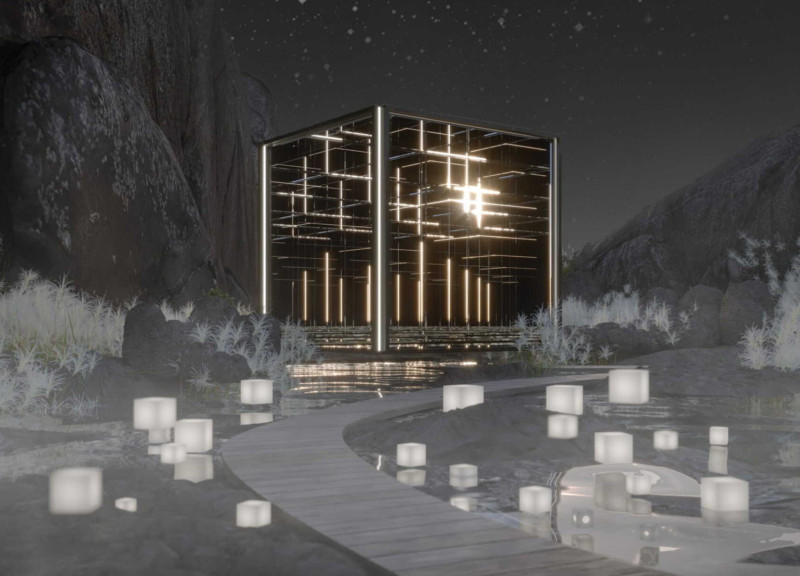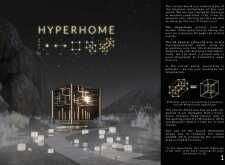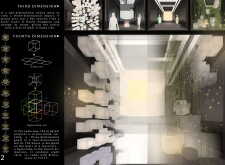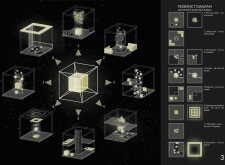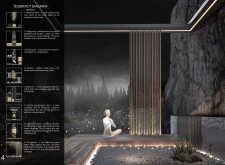5 key facts about this project
The Hyperhome project presents a modern architectural solution that integrates virtual reality with spatial design, emphasizing an exploration of four-dimensional concepts through the representation of a tesseract. This project challenges traditional architectural norms by creating an immersive environment where users can navigate through an advanced interactive experience.
The design encapsulates various spaces tailored for multiple functions, including personal offices, social lounges, bedrooms, and specialized zones for relaxation and gaming. Each space is meticulously designed to adapt to user needs, reflecting an understanding of flexible living environments. The architectural framework combines both physical and digital elements, creating a seamless blend that supports virtual engagement while maintaining a sense of warmth and comfort.
Innovative Use of Space and Interaction
The unique approach of the Hyperhome lies in its conceptualization of dimensionality. Each room functions as a dynamic module that not only offers privacy or communal areas but also shifts to accommodate user interactions. The living room, for example, serves as a flexible space for both social gathering and collaborative work, allowing users to redefine how they interact within their environment. The integration of varied materials, such as glass, steel, wood, LED lighting, and concrete, further enhances the project's adaptability. This careful selection supports structural integrity while allowing for an aesthetic that encourages openness and connection to the surrounding context.
Focus on User Experience
User experience remains central to the design philosophy of the Hyperhome. The gamified project space and meditative zen garden highlight the intention to create spaces that resonate with personal interests and emotional wellness. Innovative features, such as levitating beds and interactive projectors, not only function as practical elements but also act as stimuli for creativity and interaction. By incorporating advanced technology into everyday spaces, the Hyperhome transforms traditional concepts of living, showcasing how architecture can evolve in response to changing lifestyles.
For further insights into the architectural plans, sections, and designs that shape the Hyperhome, readers are encouraged to explore the project presentation. Engaging with the detailed architectural ideas will deepen the understanding of this distinctive approach to contemporary living spaces.


